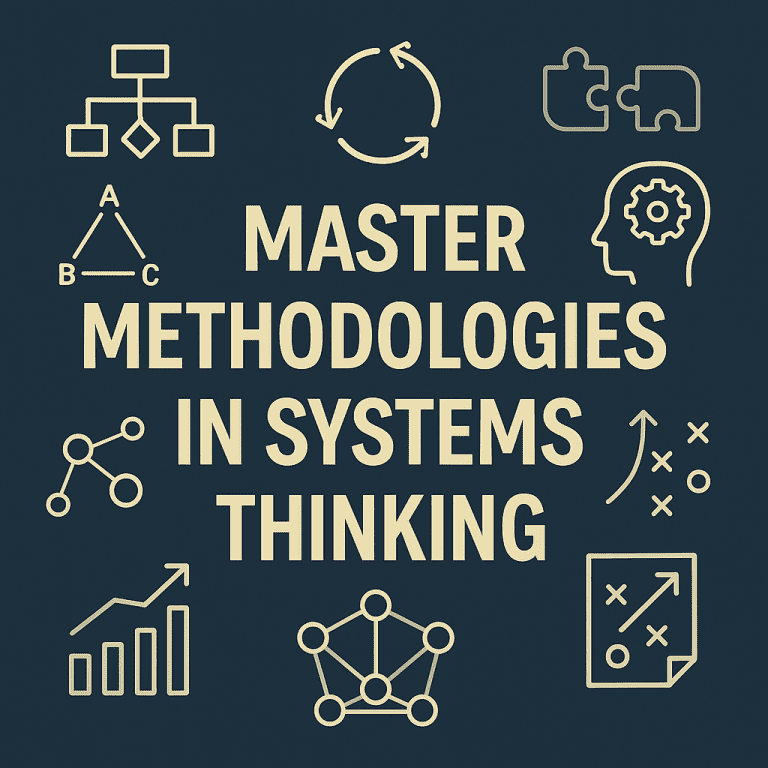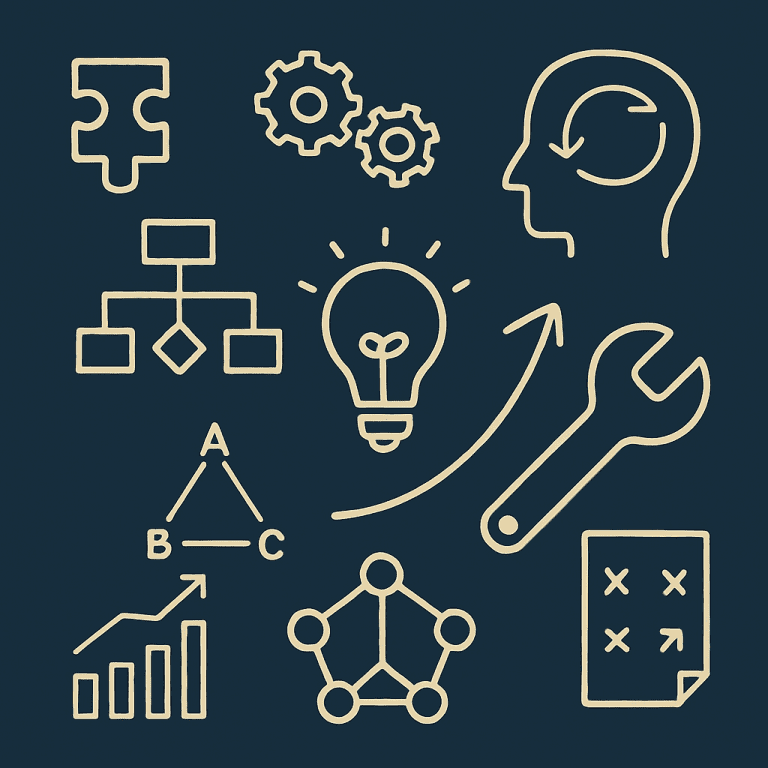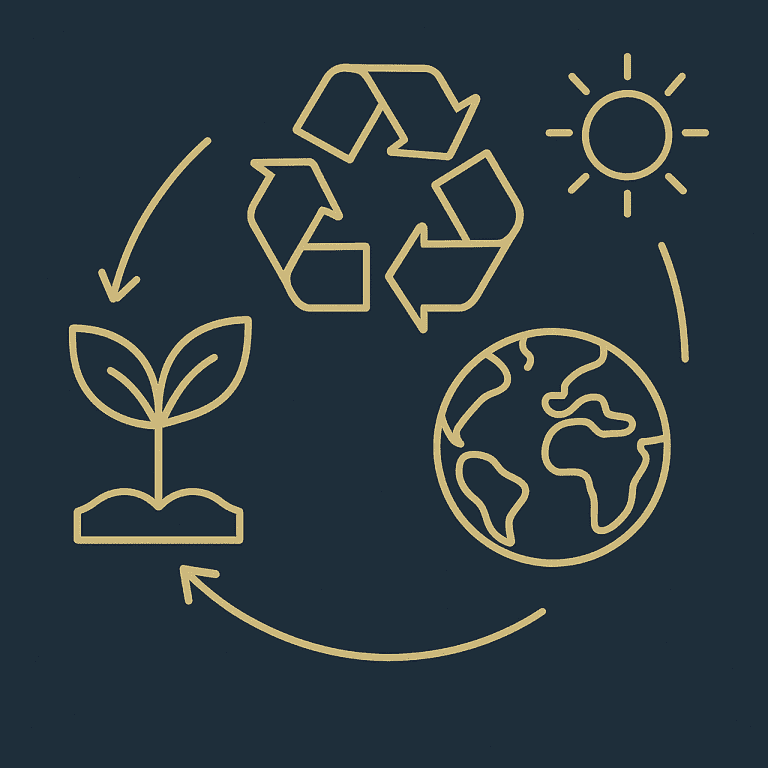Analytical Frameworks for Deep System Thinking
In consulting, the most dangerous traps aren’t always loud or obvious.
They’re subtle. They’re seductive. They’re quietly destructive.
Like consistently mistaking fleeting symptoms for profound root causes.
Like diligently solving only what’s visible — while the real leverage lies hidden just beneath the surface.
Systems thinking, at its core, is the art of seeing deeper. It’s the discipline of looking beyond surface behaviors — into structural patterns, feedback loops, belief systems, and deeply held mental models that shape outcomes over time.
This post explores five powerful analytical frameworks that help consultants cut through noise, bypass illusions, and intervene with wisdom and lasting impact.
🧊 1. The Iceberg Model
From Events to Essence
The Iceberg Model is a deceptively simple, profoundly powerful tool that shifts focus from reactive firefighting to genuine systemic insight.
Imagine a literal iceberg: only a small portion is visible above water.
- Events (Tip of the iceberg): What happened? What’s grabbing attention?
e.g., “Sales dropped last quarter,” “Project X is delayed again.” - Patterns/Trends: Has this happened before? Are there recurring cycles?
e.g., “Sales decline every Q3,” “Turnover spikes after performance reviews.” - Structures: What rules, processes, or habits make this pattern likely or inevitable?
e.g., “Short-term sales incentives,” “Centralized approvals bottleneck progress.” - Mental Models: What beliefs or assumptions drive and sustain these structures?
e.g., “Growth at all costs,” “Leaders must control decisions.”
This model invites a disciplined descent — from treating symptoms, to identifying root structures, to ultimately questioning the worldview that sustains the entire system.
🎯 Consulting Use: When a client says, “We just need to fix X,” guide them downward:
- “What patterns have we seen before?”
- “What structures support or constrain this?”
- “What mental models might be keeping this dynamic in place?”
📝 Mini-Practice: Pick a recurring issue from your life or consulting work. Sketch the iceberg’s four layers. Ask: What am I only seeing the tip of?
♻️ 2. Systems Archetypes
Recognizing Recurring Patterns of Failure
Systems Archetypes are like recurring plotlines in organizational drama. They help you name and anticipate familiar traps before you’re deep inside them.
Some classics:
- Fixes that Fail: A solution temporarily eases the problem… but worsens it long-term.
e.g., “Cutting support staff reduces cost… then tanks customer experience.” - Shifting the Burden: Relying on short-term fixes while neglecting root causes.
e.g., “Overusing consultants while avoiding internal capacity building.” - Limits to Growth: A system grows… until it hits a hidden constraint.
e.g., “Team expands rapidly, then stalls due to lack of experienced leadership.” - Success to the Successful: Resources flow to winners, starving others.
e.g., “Top salespeople get leads — new hires can’t catch up.”
These archetypes reveal why good intentions produce bad results, and where to find high-leverage points for change.
🔍 Consulting Tip: When a client experiences chronic déjà vu — “This keeps happening!” — introduce an archetype. Let the pattern speak for itself.
🎯 3. Leverage Points
Where Small Shifts Create Big Change
Not all interventions are created equal.
Leverage Points, articulated by systems pioneer Donella Meadows, help you identify where small, well-placed efforts can shift the whole system.
Here’s a brief hierarchy (from weak to strong):
- Parameters: Budgets, KPIs. Easy to change. Often low impact.
- Buffers: Inventory, slack capacity. Absorb shocks.
- Structures: Redesigning flows or supply chains.
- Feedback Loops: Strengthen corrective or amplifying loops.
- Information Flows: Who knows what — and when.
- Rules: Policies, procedures, laws.
- Self-Organization: Letting systems evolve from within.
- Goals: Changing what the system is for.
- Paradigms: Deep mental models that define reality.
💡 Most organizations fixate on KPIs and budgets. Systems thinkers aim higher.
🧠 Consulting Lens:
- Are we adjusting surface metrics — or shifting purpose?
- What leverage points are hiding just beyond awareness?
🪜 4. The Ladder of Inference
How Beliefs Create Blind Spots
Developed by Chris Argyris, the Ladder of Inference shows how quickly we leap from data… to beliefs… to action — often without realizing it.
- Observe Data: Something happens.
- Select Data: We notice certain things over others.
- Assign Meaning: Based on personal or cultural context.
- Make Assumptions: Often unconsciously.
- Draw Conclusions: Based on those assumptions.
- Adopt Beliefs: About the world or people.
- Act: In ways that reinforce those beliefs.
This is how conflict festers, bias persists, and misalignment spreads. And how entire organizations can run on flawed, untested assumptions.
🧭 Consultant Wisdom:
- When dialogue gets stuck or charged, help teams trace the ladder.
- Ask: “What did we actually observe?” “Where might assumptions be creeping in?”
- Invite them to walk back down — together.
🧱 5. Boundary Critique
Who Decides What Matters — and What’s Left Out?
Every model, strategy, or change effort includes boundaries.
They define:
- What’s in.
- What’s out.
- And — crucially — who gets to decide.
Boundary Critique, from Critical Systems Thinking, helps surface the ethical and political assumptions behind any system definition.
It asks:
- Who is affected but not represented?
- What’s declared “out of scope” — and why?
- Whose voices are considered “valid” — and whose are ignored?
- How does our framing privilege some and marginalize others?
This is systems thinking at its most human — and most courageous.
🧠 Consulting Application:
Before facilitating strategy or system redesign, pause and ask:
- “Where is the boundary of this conversation?”
- “Who drew it?”
- “Who might we be leaving out — and what truth might they bring?”
💬 Real Talk: Why Deep Analysis Matters
Most change efforts fail not because of poor effort or bad intentions.
They fail because they never leave the surface.
They tweak org charts, launch initiatives, or install shiny new software…
…without ever addressing the deeper structures and beliefs driving the dysfunction.
But when you integrate the depth of:
- the Iceberg Model,
- the clarity of Systems Archetypes,
- the precision of Leverage Points,
- the awareness of the Ladder of Inference, and
- the ethics of Boundary Critique…
You stop chasing symptoms.
You start shifting systems.
You stop offering pre-packaged answers.
You start framing the questions that change everything.
🛠 Mini-Practice: Apply the Iceberg Model
Choose one persistent challenge — personal, team, or client.
Then map the four layers:
- Events: What’s happening on the surface?
- Patterns: What trends or cycles repeat?
- Structures: What systems, incentives, or habits drive this?
- Mental Models: What assumptions keep those structures in place?
Then reflect:
- Where have you been focusing your attention?
- What layer truly holds the power to shift this dynamic?
- What new questions — or conversations — could unlock movement?
🧠 Final Thought
The surface is noisy.
It’s fast. It’s familiar. It’s addictive.
But true transformation lives in the depths.
The most impactful consultants aren’t the ones who rush to solve — they’re the ones who help clients see.
So carry these frameworks not just in your toolkit,
…but in your mindset. In how you listen. In how you lead.
Because in complexity, the most powerful act of leadership is often this:
The willingness to look beneath — and help others do the same.
- The Whisper of the Whole: A Systems Thinking Guide for Consultants
- What is a System, Really?
- The Living Dance of Systems
- Resilience and the Wisdom of Adaptive Systems
- Roots of Insight
- The Systems Thinker’s Compass
- Drawing Complexity
- Peering Below the Surface
- Master Methodologies in Systems Thinking
- Enhancing Familiar Tools with Systems Thinking
- Transforming Business Through Systems Thinking
- Systems Thinking in Public Policy & Governance
- Sustainable Systems
- Systems Thinking for Engineering & Technology
- The Inner System: You
- The Roadblocks
- The Future of Systems Thinking
- Systems Thinking FAQ: Myths, Misunderstandings & Core Insights







